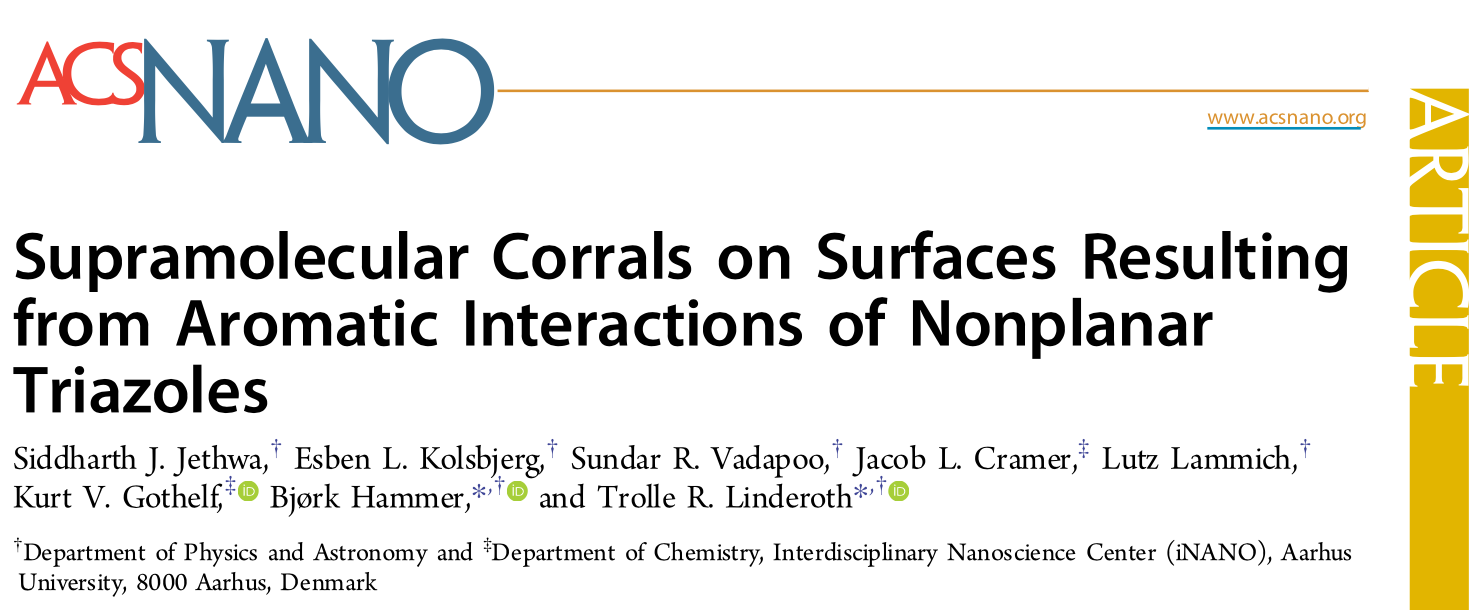PAPER: Supramolecular Corrals on Surfaces Resulting from Aromatic Interactions of Nonplanar Triazoles

ACS Nano 2017, 11, doi: 10.1021/acsnano.7b03484
Siddharth J. Jethwa, S. J., Kolsbjerg, E. L., Vadapoo, S. R., Cramer, J. L., Lammich, L., Gothelf, K. V., Hammer, B., Linderoth, T. R.
Department of Physics and Astronomy
Department of Chemistry, Interdisciplinary Nanoscience Center (iNANO), Aarhus University, 8000 Aarhus, Denmark
Abstract
Interaction forces between aromatic moieties, often referred to as π–π interactions, are an important element in stabilizing complex supramolecular structures. For supramolecular self-assembly occurring on surfaces, where aromatic moieties are typically forced to adsorb coplanar with the surface, the possible role of intermolecular aromatic interactions is much less explored. Here, we report on unusual, ring-shaped supramolecular corral surface structures resulting from adsorption of a molecule with nonplanar structure, allowing for intermolecular aromatic interactions. The discrete corral structures are observed using high-resolution scanning tunneling microscopy, and the energetic driving forces for their formation are elucidated using density functional theory calculations and Monte Carlo simulations. The individual corrals involve between 11 and 18 molecules bound through triazole moieties to a ring-shaped ensemble of bridge site positions on (111) surfaces of copper, silver, or gold. The curvature required to form the corrals is identified to result from the angle dependence of aromatic interactions between molecular phenanthrene moieties. The study provides detailed quantitative insights into triazole−surface and aromatic interactions and illustrates how they may be used to drive surface supramolecular self-assembly.
